Introduction
Abuse of children is a terrible problem that affects millions of kids around the world. Parents, schools, and social workers must know its types and how to stop it. This complete guide will teach you important things about how to spot and prevent child abuse, protecting the safety and well-being of our younger citizens.
The Different Forms of Child Abuse
Physical hurt isn’t the only kind of child abuse. It includes many different types of abuse, all of which are very bad for the child.
Physical Abuse
Physical abuse occurs when someone hits, kicks, burns, or otherwise harms a kid. Signs of physical abuse include unusual scrapes, bruises, or shattered bones. Kids may become hostile or scared of contact.
Emotional Abuse
Psychological abuse, also known as emotional abuse, harms a child’s self-esteem and mental health. Constant insults, abuse, and rejection are possible. People who are emotionally abused may worry, cry, or withdraw.
Sexual Abuse
Sexual abuse includes fondling, molesting, raping, and utilizing pornography to exploit children. It might be hard to see, but indicators include a youngster knowing too much about sexual conduct for their age or suddenly being cold or furious.
Neglect
Child neglect occurs when fundamental needs, including food, shelter, medical care, and education, aren’t provided. Poor hygiene, starvation, untreated medical issues, and frequent school absences are signs of maltreatment. Neglected children may exhibit signs of developmental delay.
The Prevalence of Child Abuse
Child abuse is disturbingly common, affecting children of all ages and backgrounds.
Global Statistics
Child abuse is a serious problem all over the world. The World Health Organization (WHO) says that in the past year, about 1 billion children ages 2 to 17 have been abused or neglected physically, sexually, or emotionally. These shocking numbers show how much more needs to be done to raise awareness and get people involved.
National Data
According to the CDC, one in seven American children has experienced child abuse or neglect in the last year. The number of child abuse fatalities is considerable. About 1,750 children die from abuse and neglect annually. These data demonstrate the need to address child abuse at the national and local levels.
Long-Term Effects
Abuse of children has long-lasting effects on the victims’ physical, mental, and social health. Survivors of child abuse are more likely to have long-term health problems, mental health problems, and problems with drugs or alcohol. Because of these long-term effects, it’s clear how important it is to help mistreated children right away.
How to Recognize Child Abuse
Recognizing child abuse is the first step in preventing it. Here are some key indicators to watch for:
Physical Signs
Children who are abused may have injuries like bruises, burns, or broken bones that can’t be explained. They might also act scared of people or not want to go home. You should pay close attention to any signs of pain or discomfort, especially if the child can’t or won’t explain what happened.
Behavioral Changes
Children who have been abused often show significant changes in how they act. They might pull away, feel nervous, or get sad. Others may act aggressively or in a way that causes problems. Changes in school achievement that happen quickly or missing a lot of schools can also be red flags.
Emotional Responses
Children who are emotionally abused may have low self-esteem, act in extreme ways (like being too obedient or too angry), or show signs of worry and sadness. Watch out for signs of fear, withdrawal, or strong feelings that don’t fit with what’s happening.
The Role of Parents in Child Abuse Prevention
Parents play a crucial role in preventing child abuse. Here are some ways parents can help keep their children safe:
Educate Yourself
Parents can spot possible problems early if they know the signs and risk factors of child abuse. Find out about the different kinds of abuse and the signs you should look for. Find out about the newest studies and tools that can help stop child abuse.
Open Communication
It is essential to keep the lines of conversation open with your child. Instruct them to speak out about any worries or awkward situations. Ensure your child feels safe and trusted so they can talk about their feelings and thoughts without worrying about being judged or punished.
Know Your Child’s Activities
Know what your child does every day, who they hang out with, and where they go to stay active. Watch how they act around other kids and adults and pay attention to any changes in their behavior or mood that might mean they are being abused. Set clear limits and standards to keep them safe.
The Impact of Teachers in Identifying Abuse
Teachers are often in a unique position to identify and address child abuse. Here’s how they can help:
Build Trusting Relationships
Teachers are more likely to see signs of abuse when they get to know their kids well and develop trust. Make the classroom a safe and caring place where students feel appreciated and supported. Encourage your kids to talk to each other and listen to what they say.
Recognize the Signs
Teachers need to know how to spot the physical, mental, and behavioral signs of child abuse. Attend professional development classes and training events to stay current on the latest studies and best practices in recognizing and stopping child abuse.
Report Suspicions
Teachers must report child abuse to the right people right away if they think it is happening. Learn how to report something to your school and do it exactly as they say. Remember that reporting a hunch and being proved incorrect is preferable to staying silent and allowing abuse.
Social Workers’ Role in Child Abuse Prevention
Social workers play a vital role in preventing and addressing child abuse. Here’s how they can make a difference:
Conduct Assessments
Social workers do detailed checks on families and children to find possible dangers and signs of abuse. They use measurement tools and methods based on facts to get the correct information and decide on the best action.
Provide Support Services
A social worker can help a family find support services like therapy, parenting classes, and money help. These services can help eliminate the stresses that cause people to act abusively and give families the tools they need to make their homes safe and caring places for their kids.
Advocate for Change
Advocating for policy changes and more money for programs that stop child abuse is something that social workers can do. Talk to local, state, and national officials to get the word out about how important it is to put money into services that stop child abuse and help children who have been abused.
Effective Child Abuse Prevention Strategies
Preventing child abuse requires a multi-faceted approach. Here are some effective strategies:
Public Awareness Campaigns
It is essential to make people more aware of child abuse. Start efforts to teach people about the signs of abuse, how to report it, and why it’s essential to help families who are in danger. Spread the word through neighborhood events, social media, and relationships with other groups in the area.
Parent Education Programs
Parent education programs can give parents the information and skills they need to make their home a safe and caring place for their kids. Hold classes on how to be a good parent, deal with stress, and talk to people. Parents who are having a hard time should be given tools and help.
Community Involvement
Get the community involved in stopping child abuse. Tell people in the neighborhood to watch out for each other and report any signs of abuse. Set up support systems for families, like community centers, training programs, and events for kids after school.
The Importance of Early Intervention
Early intervention is critical to preventing the long-term effects of child abuse. Here’s why it matters:
Reducing Trauma
Getting help for mistreated children early on can help lessen the stress they go through. Giving support and tools at the right time can reduce the effects of abuse and help people heal. Help kids work through their problems and find good ways to deal with them by providing guidance and therapy services.
Breaking the Cycle
It is more possible for children who have been abused to hurt others. Early assistance can break this pattern by helping and teaching families who are at risk. Help families stay healthy by putting in place programs that deal with the causes of abuse.
Improving Outcomes
For mistreated children, getting help early improves their physical, social, and mental health. Dealing with problems early on can help kids become strong and reach their full potential. Monitor progress and change measures as needed to get the best results.
Support Resources for Child Abuse Victims
Support resources are essential for helping child abuse victims heal and thrive. Here are some valuable resources:
Counseling Services
Kids who have been mistreated can talk about their feelings and work through their pain in a safe place through counseling. Survivors of child abuse should get customized and group therapy.
Hotlines and Helplines
Hotlines and helplines are quick ways for abuse victims and their families to get help and support. Ensure these tools are generally known and easy to get to. Provide skilled experts who can help with compassion and understanding.
Support Groups
Support groups can help people who have been abused meet with others who have been through the same thing. Make places where people can talk about their experiences, get help, and feel like they are part of a safe and private group.
Preventing Child Abuse in the Digital Age
The digital age presents new challenges for child abuse prevention. Here’s how to address them:
Online Safety Education
Teach kids and adults how to stay safe online. Help them spot and avoid possible threats like harassment, internet attackers, and improper material. Offer information and tools for monitoring and controlling what people do online.
Parental Controls
Tell parents to use parental limits and private settings to keep their kids safe online. Advise on how to setup and use these tools correctly. Monitor what your kids are doing online and deal with any problems right away.
Reporting Mechanisms
Make sure parents and children know how to report abuse online. Give people clear directions and tools to report events to the police and online sites. Work with tech companies to make it easier to report problems and get answers faster.
Building a Culture of Prevention
Creating a culture of prevention is essential for addressing child abuse. Here’s how to do it:
Promoting Positive Parenting
Encourage suitable parenting styles that stress love, support, and good communication. Help parents learn these skills by giving them tools and training. Celebrate your successes and tell others about them to motivate them.
Encouraging Community Support
Get people in the neighborhood to help each other and watch out for families in danger. Help families in need by setting up networks of support and resources. Encourage everyone to take responsibility for the safety and well-being of children.
Investing in Prevention Programs
Invest in programs that avoid child abuse by addressing the underlying causes. Help programs that offer early prevention services provide information and tools and work to keep families healthy. Push for more money and change the rules to help with these attempts.
Conclusion
Child abuse is widespread and needs collaboration from parents, schools, social workers, and the community. We can protect and nurture our children by understanding abuse, identifying the indicators, and adopting effective preventative techniques. Help safeguard our most vulnerable and guarantee a better future for everyone.
Request materials from local child abuse prevention and support groups or specialists. We can change the world and make every kid safe, loved, and supported.


